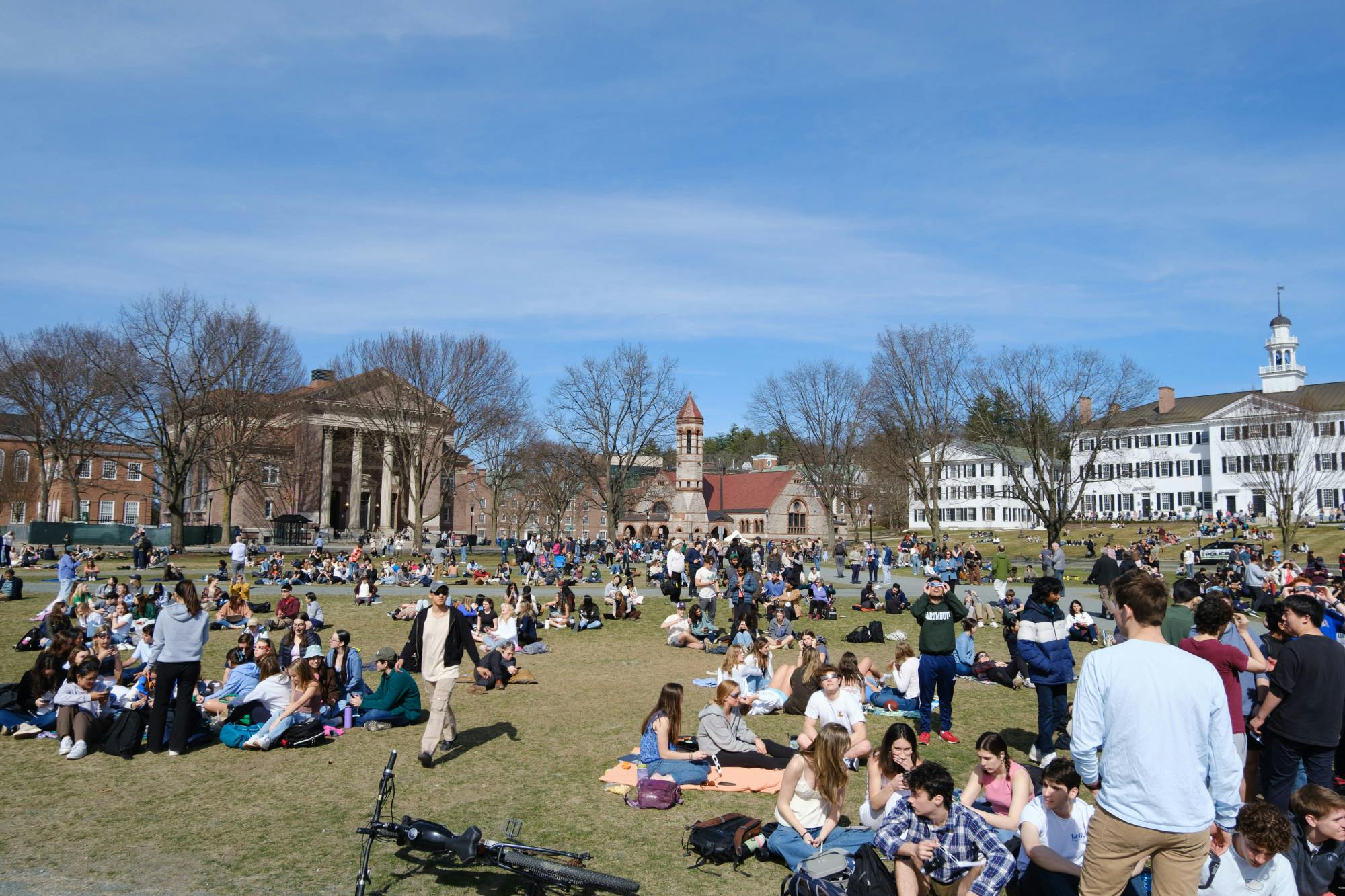On April 8, many community members experienced a total solar eclipse — an event that has not taken place in New Hampshire for 65 years, according to physics and astronomy professor Brian Chaboyer. Hanover itself saw 98.3% totality, meaning the moon only left 1.7% of the sun uncovered.
Although Hanover was not in the path of totality — where the moon completely blocks the sun — “thousands” nonetheless converged on the Green for a viewing event co-hosted by the Rockefeller Center for Public Policy, the Office of the Provost and the physics and astronomy department, Dartmouth News reported.
The physics and astronomy department made telescopes available on the Green for people to safely view the eclipse, while the Rockefeller Center distributed eclipse glasses, Chaboyer said. Eclipse glasses allow viewers to safely look directly at the sun.
Liam Coughlin ’25 wrote that he watched the eclipse from the Green, describing it as an “incredible, self-transcending moment.”
“It connected me to the friends and strangers I was physically in the company [of], as well as connected me emotionally to everyone across the country who got the chance to experience this remarkable moment,” Coughlin wrote. “As someone fascinated by science, the eclipse was special because it offered a chance to understand, experientially, just how much energy — in the form of both light and heat — the sun provides us.”
Lily Thornton ’26 said she also felt the community’s presence during the eclipse. Students were “gathering and enjoying the weather” as the Green “fill[ed] up with frisbees and picnics,” she added.
Chaboyer said New Hampshire — one of only 15 states that was inside the path of totality — also attracted many “eclipse chasers,” or tourists who traveled to the Granite State from across the country to observe the event. Hotels and campgrounds in the area were booked up, and traffic to and from the path of totality often tripled typical travel times, Chaboyer said.
Physics and astronomy professor John Thorstensen said a total solar eclipse occurs when the moon passes between the sun and the Earth, completely blocking the sun’s light and casting a shadow on the Earth’s surface. Observers in the path of totality — which was only 100 miles wide — witnessed day turn to night for up to seven and a half minutes, depending on their location.
Many from the Dartmouth community traveled an hour or more north of Hanover to see the eclipse in totality.
Chaboyer and physics and astronomy professor Elisabeth Newton took a group of graduate students and about 30 undergraduates to the Fairbanks Museum in Saint Johnsbury, Vermont — which was in the path of totality — for the “Sun+Moon+You” eclipse event. There, Dartmouth students set up solar-viewing telescopes, worked on crafts with children and taught members of the community how to safely view solar eclipses, Chaboyer said.
“We just talked about eclipses in class the other day, and this is a pretty unique opportunity,” Chaboyer said. “This is not going to happen anytime soon anywhere near Dartmouth.”
Chaboyer said the next time Dartmouth will be an hour away from a total eclipse is 2079, while the next solar eclipse in the continental United States is 20 years away.
Sam Halfpenny ’26 said he traveled to Burlington, Vt. — which was also in the path of totality — to watch the eclipse with a group of friends. Although he described the trip as a“full-day experience” that entailed a five-hour drive home — up from under two hours without traffic — Halpenny said it was “worth it.”
“The world kept getting dimmer and colder, culminating in the strange darkness of totality,” Halfpenny said. “It was amazing.”
Katie Bartolino ’25 said she was initially “hesitant” to drive to Burlington to see the eclipse in totality, since she was told by other students that the drive could take up to eight hours. She ultimately decided to make the trip.
“It was honestly so magical to watch a whole group of people cheer on the sun and the moon, and the 360 [degree] sunset was insane,” Bartolino said.
Lauren Azrin ’25 contributed to reporting.




